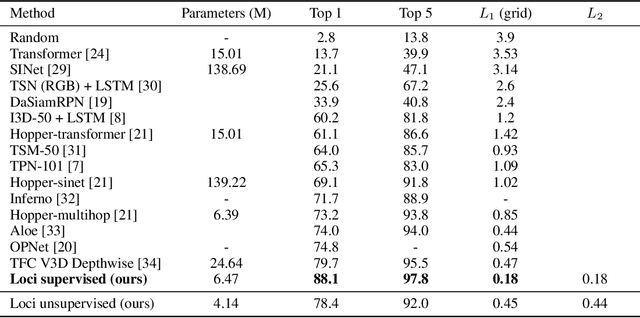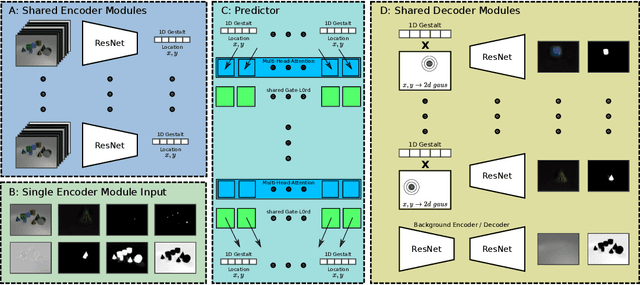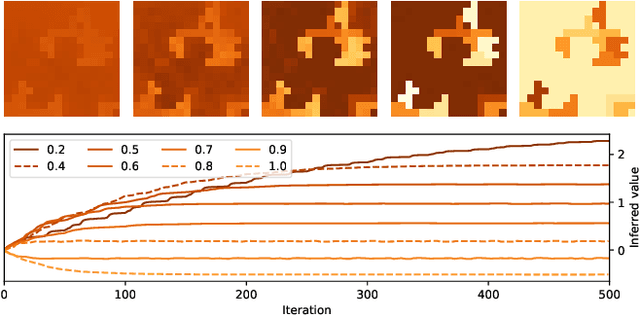Tobias Menge
Learning What and Where -- Unsupervised Disentangling Location and Identity Tracking
May 26, 2022



Abstract:Our brain can almost effortlessly decompose visual data streams into background and salient objects. Moreover, it can track the objects and anticipate their motion and interactions. In contrast, recent object reasoning datasets, such as CATER, have revealed fundamental shortcomings of current vision-based AI systems, particularly when targeting explicit object encodings, object permanence, and object reasoning. We introduce an unsupervised disentangled LOCation and Identity tracking system (Loci), which excels on the CATER tracking challenge. Inspired by the dorsal-ventral pathways in the brain, Loci tackles the what-and-where binding problem by means of a self-supervised segregation mechanism. Our autoregressive neural network partitions and distributes the visual input stream across separate, identically-parameterized and autonomously recruited neural network modules. Each module binds what with where, that is, compressed Gestalt encodings with locations. On the deep latent encoding levels interaction dynamics are processed. Besides exhibiting superior performance in current benchmarks, we propose that Loci may set the stage for deeper, explanation-oriented video processing -- akin to some deeper networked processes in the brain that appear to integrate individual entity and spatiotemporal interaction dynamics into event structures.
Hidden Latent State Inference in a Spatio-Temporal Generative Model
Sep 21, 2020



Abstract:Knowledge of the hidden factors that determine particular system dynamics is crucial for both explaining them and pursuing goal-directed, interventional actions. The inference of these factors without supervision given time series data remains an open challenge. Here, we focus on spatio-temporal processes, including wave propagations and weather dynamics, and assume that universal causes (e.g. physics) apply throughout space and time. We apply a novel DIstributed, Spatio-Temporal graph Artificial Neural network Architecture, DISTANA, which learns a generative model in such domains. DISTANA requires fewer parameters, and yields more accurate predictions than temporal convolutional neural networks and other related approaches on a 2D circular wave prediction task. We show that DISTANA, when combined with a retrospective latent state inference principle called active tuning, can reliably derive hidden local causal factors. In a current weather prediction benchmark, DISTANA infers our planet's land-sea mask solely by observing temperature dynamics and uses the self inferred information to improve its own prediction of temperature. We are convinced that the retrospective inference of latent states in generative RNN architectures will play an essential role in future research on causal inference and explainable systems.
 Add to Chrome
Add to Chrome Add to Firefox
Add to Firefox Add to Edge
Add to Edge